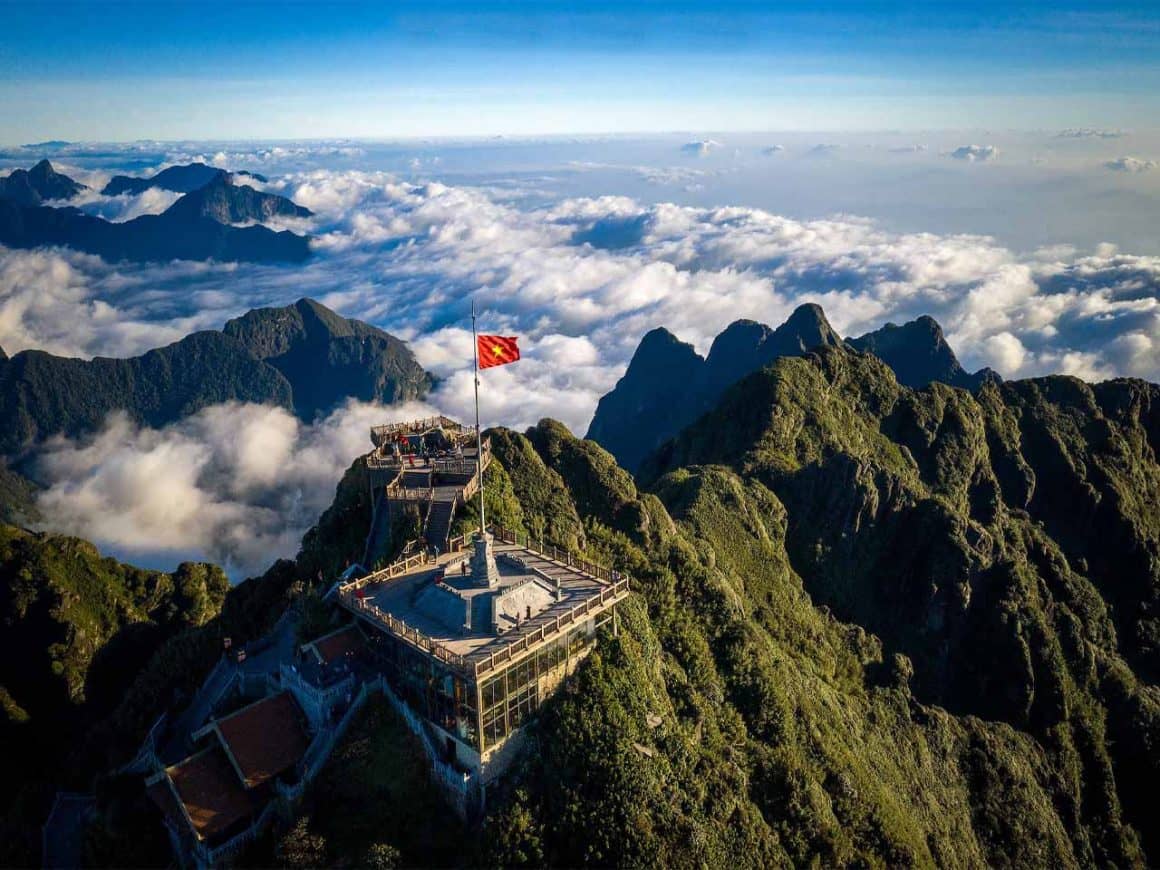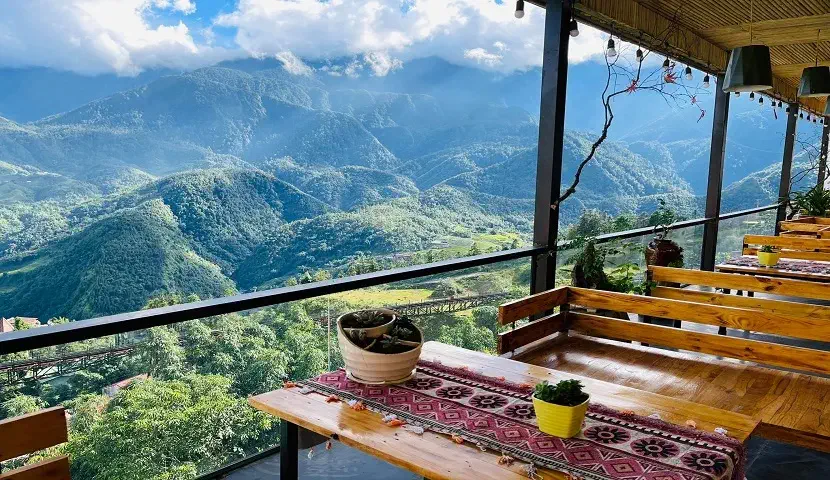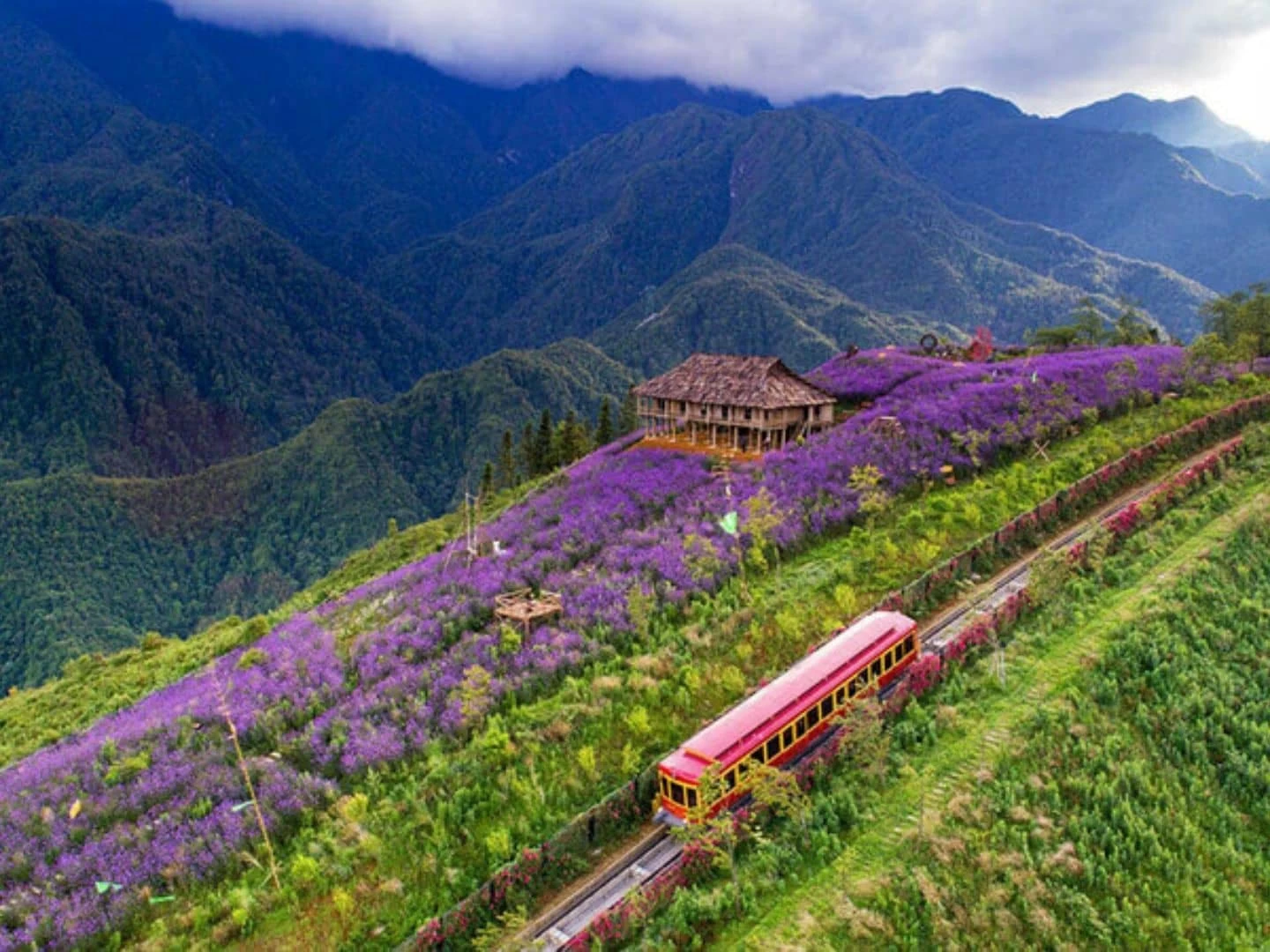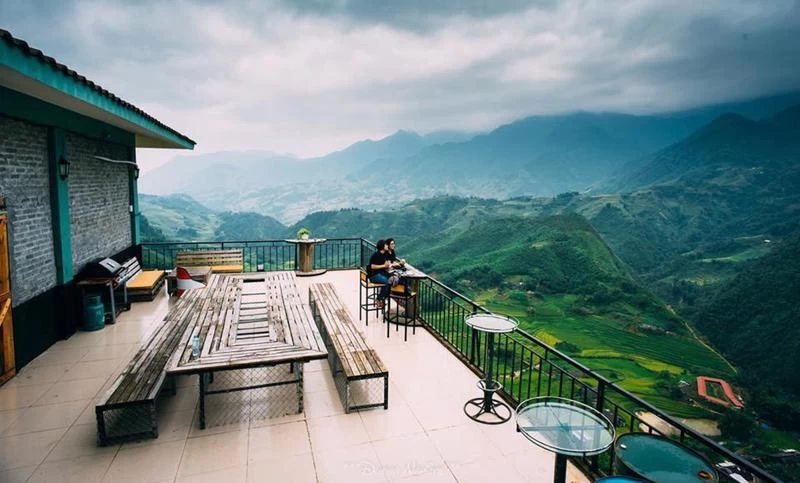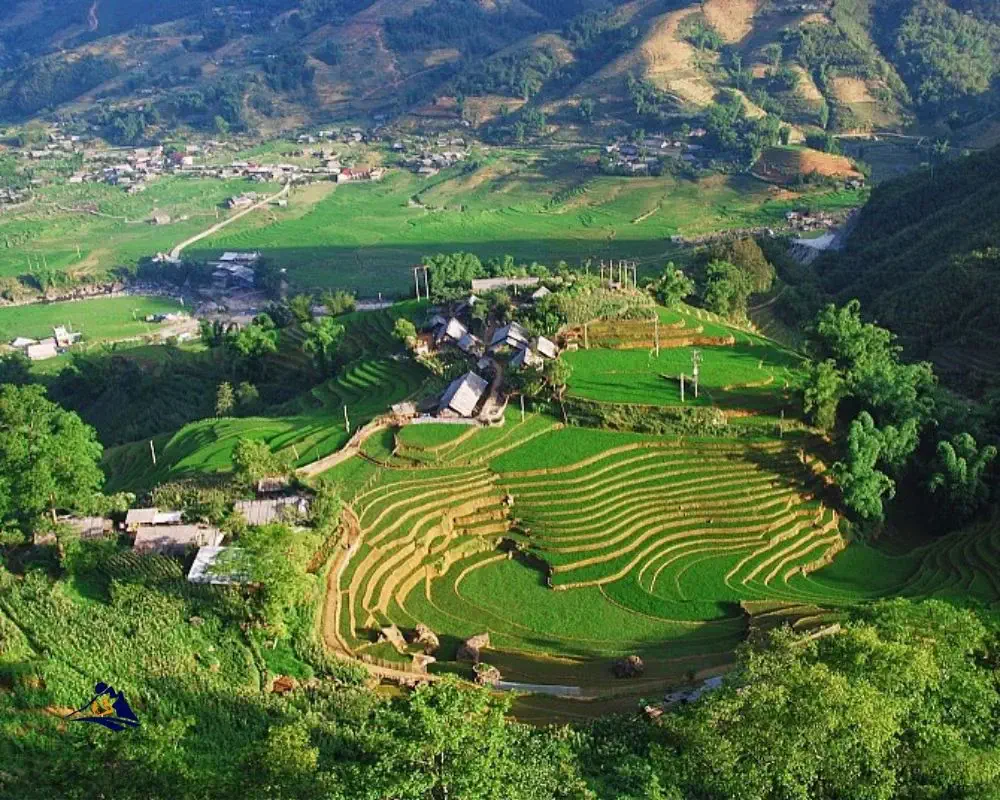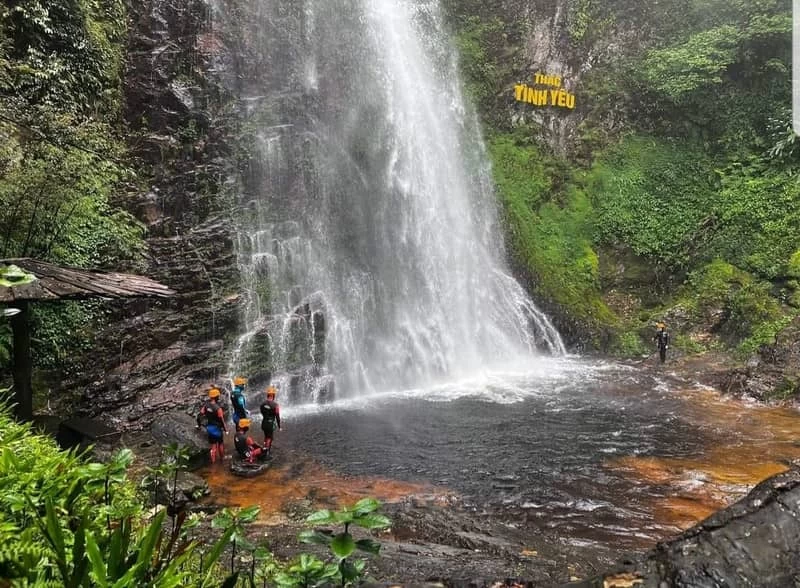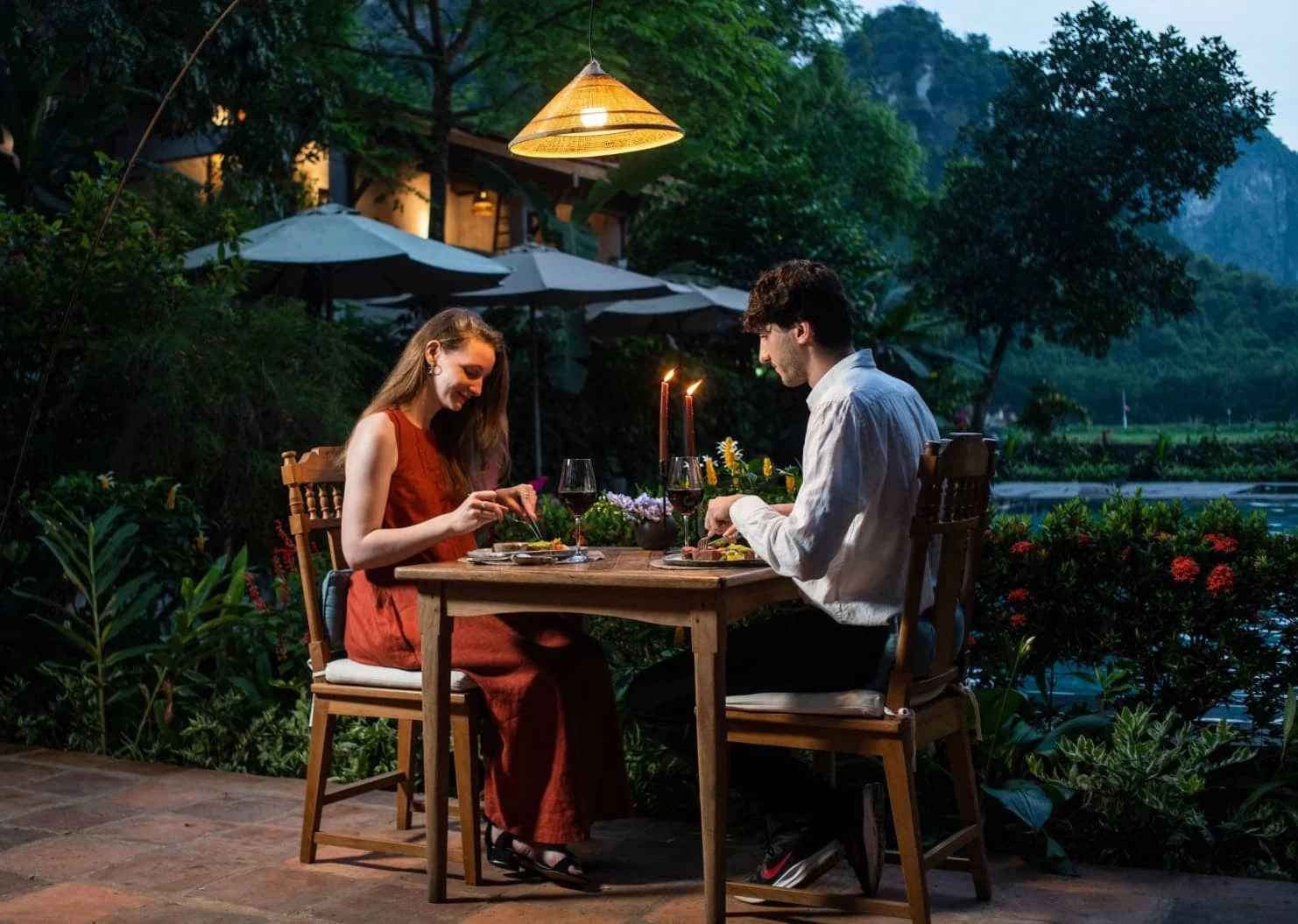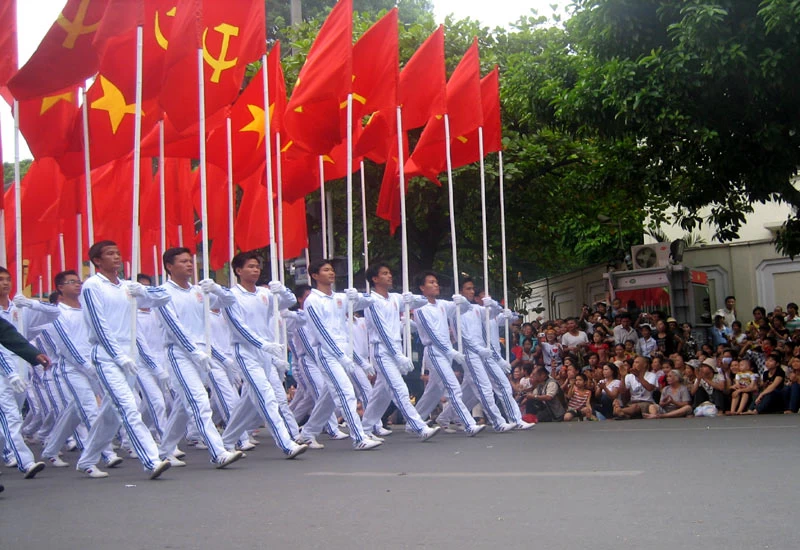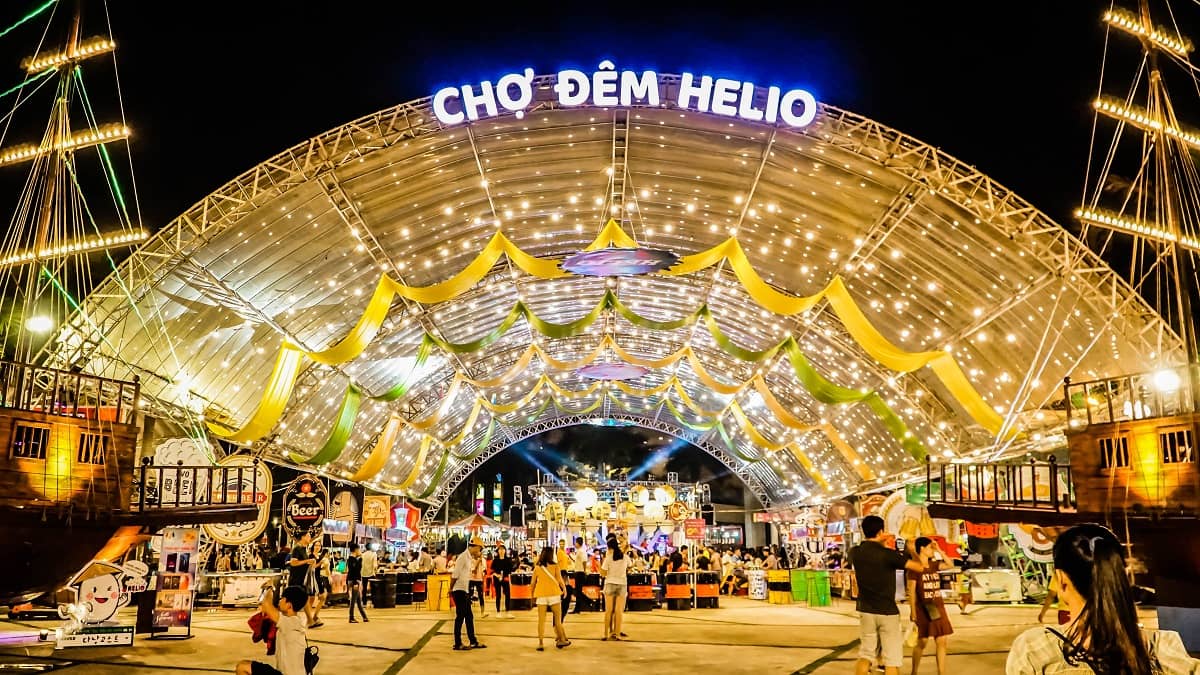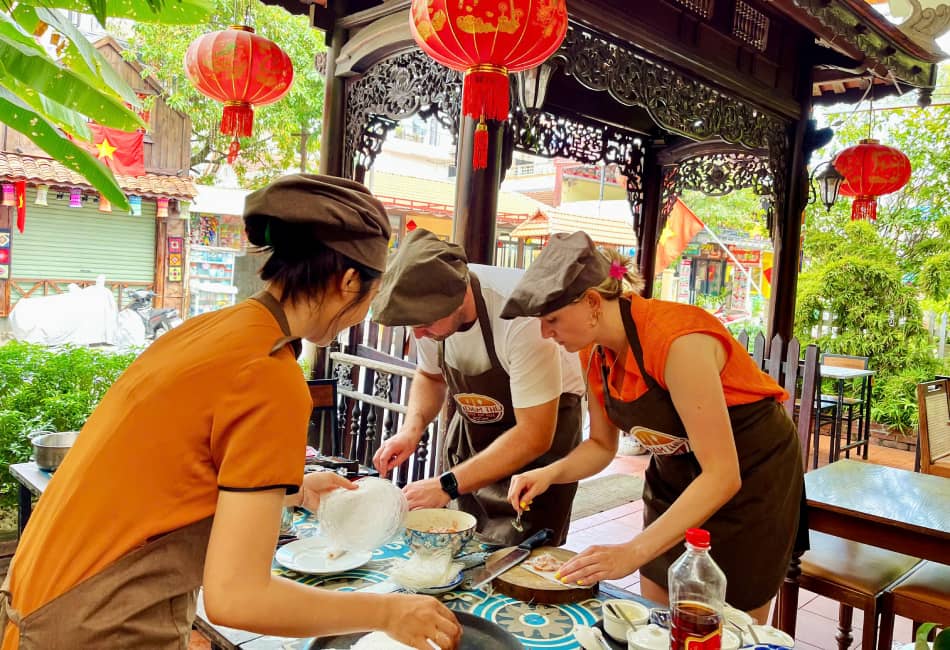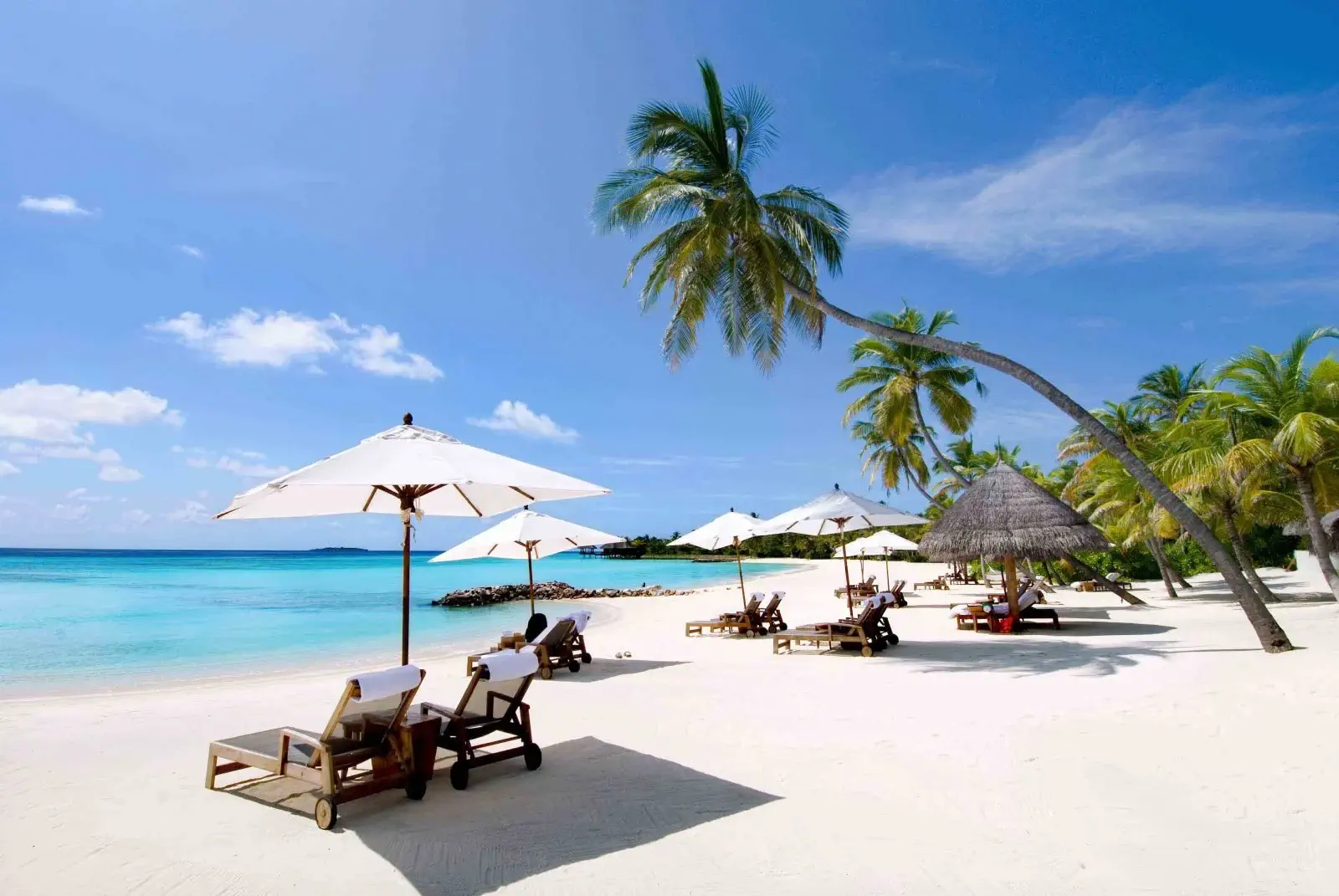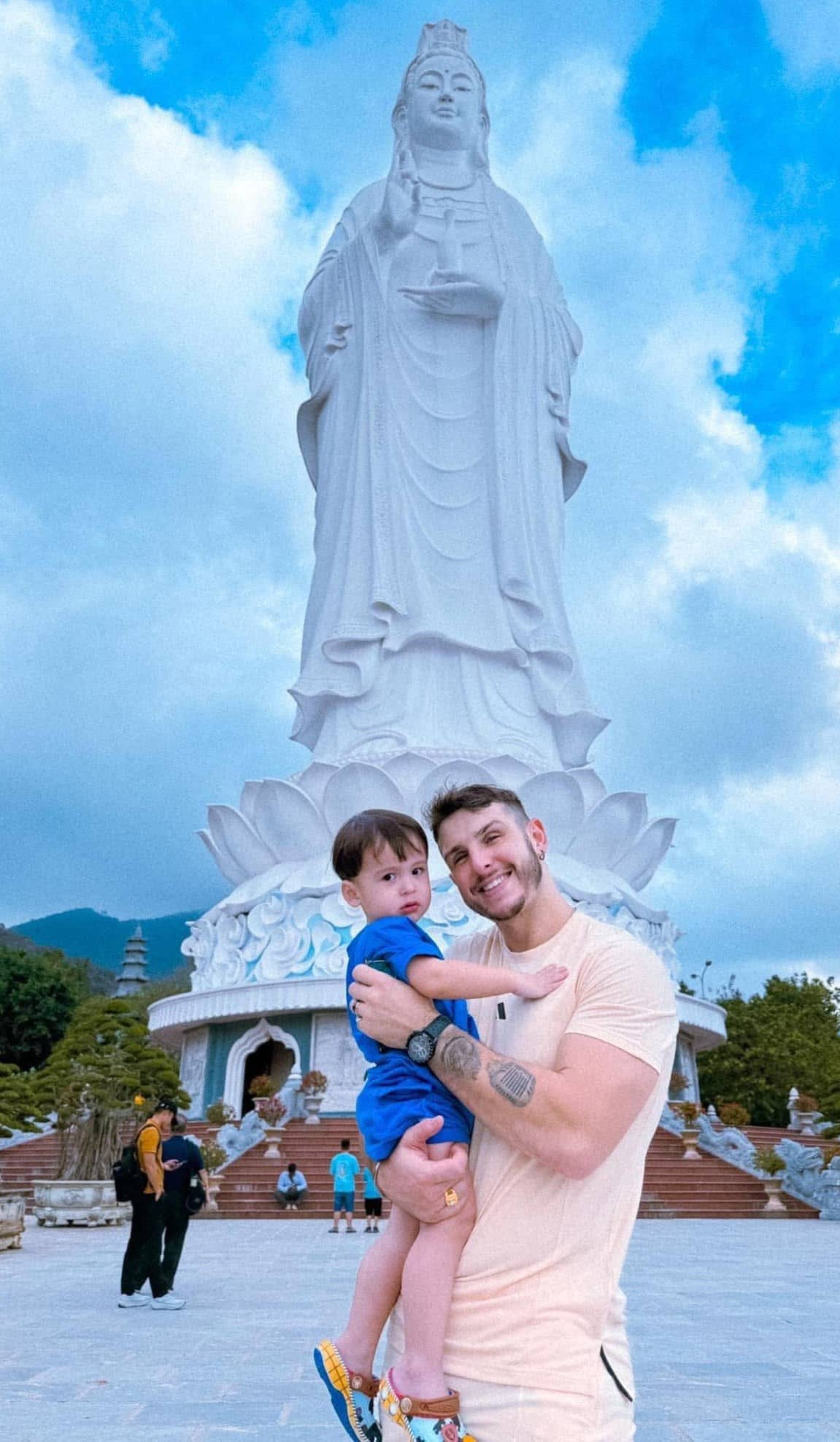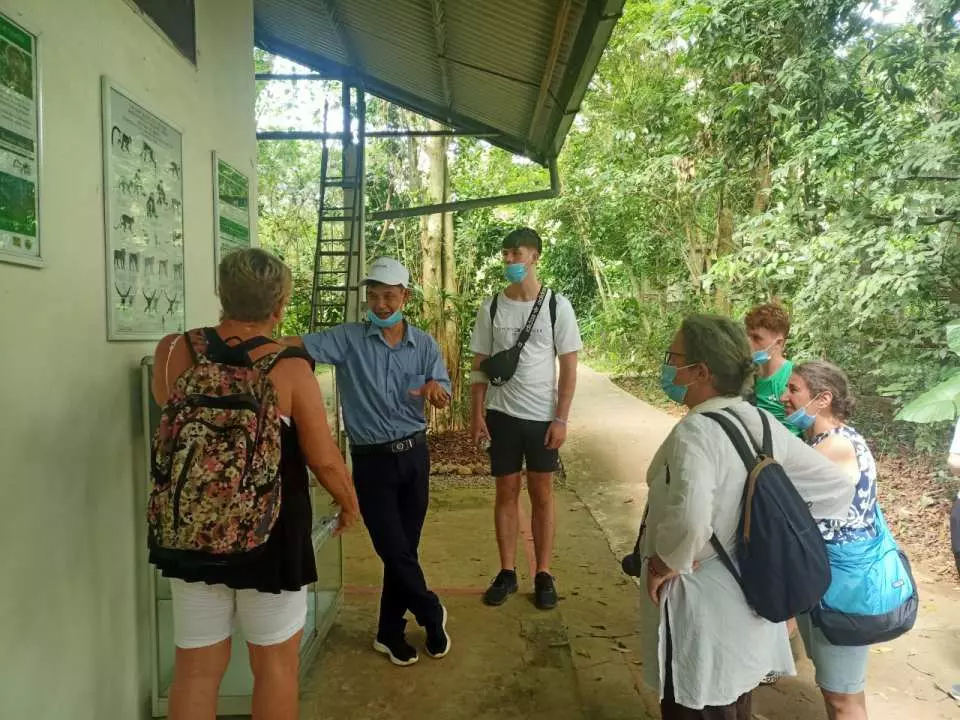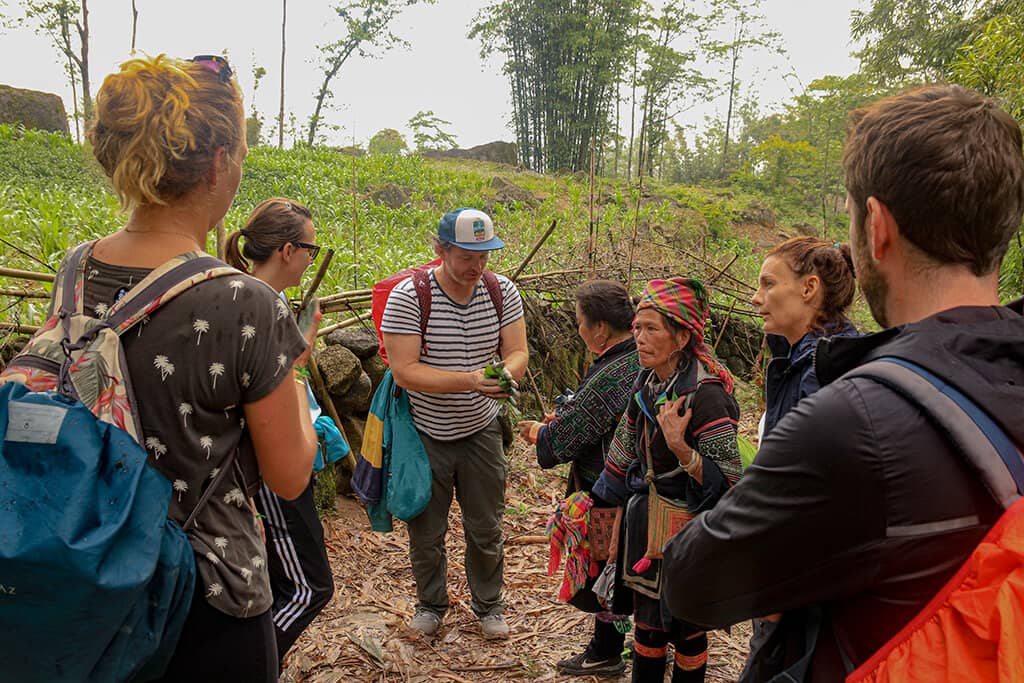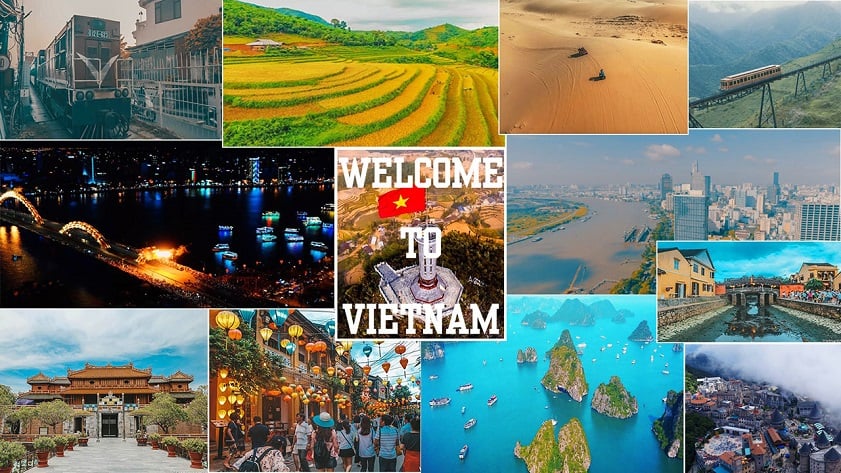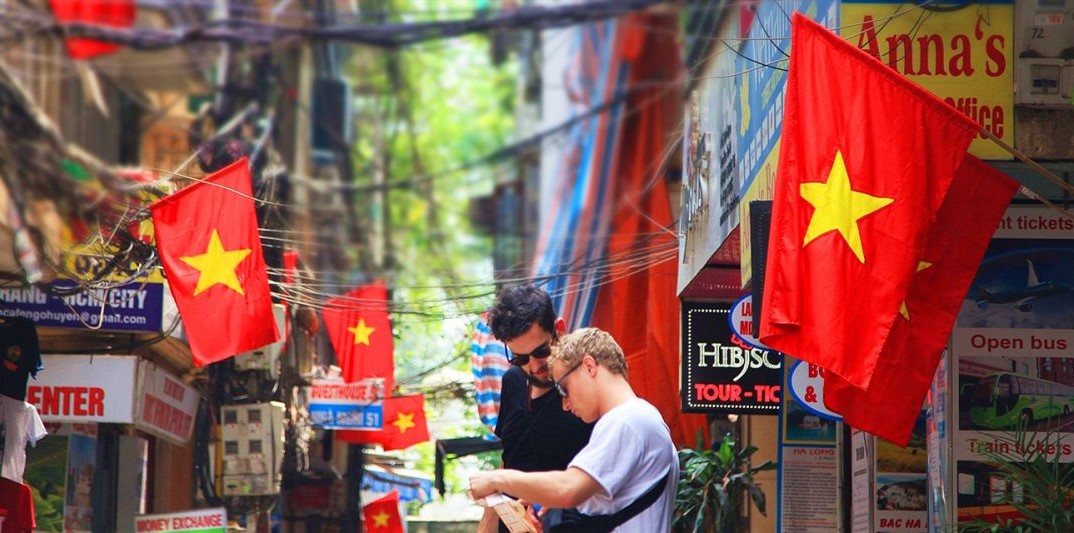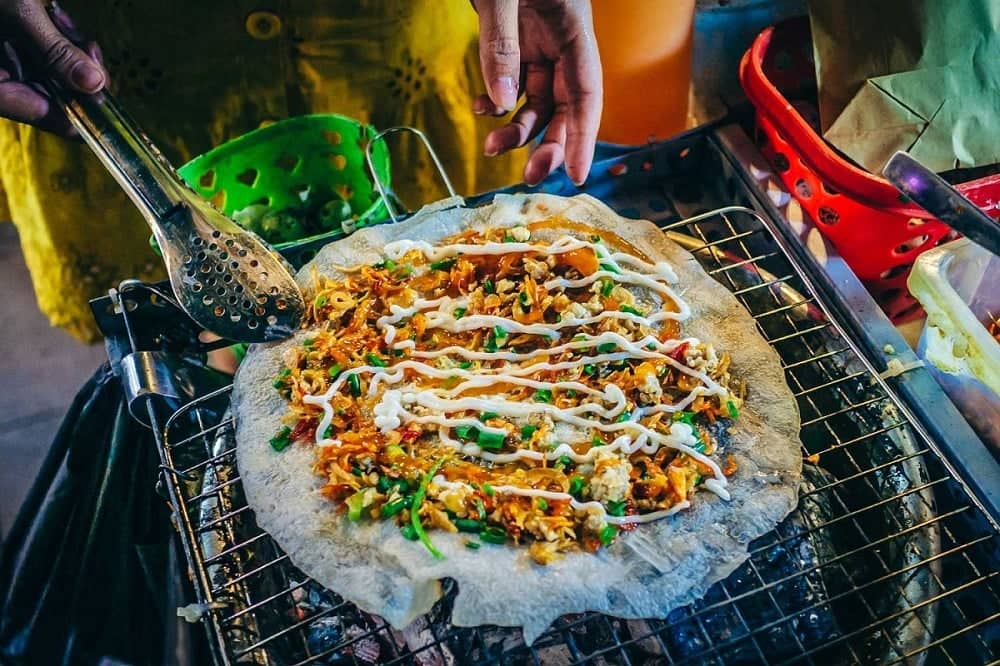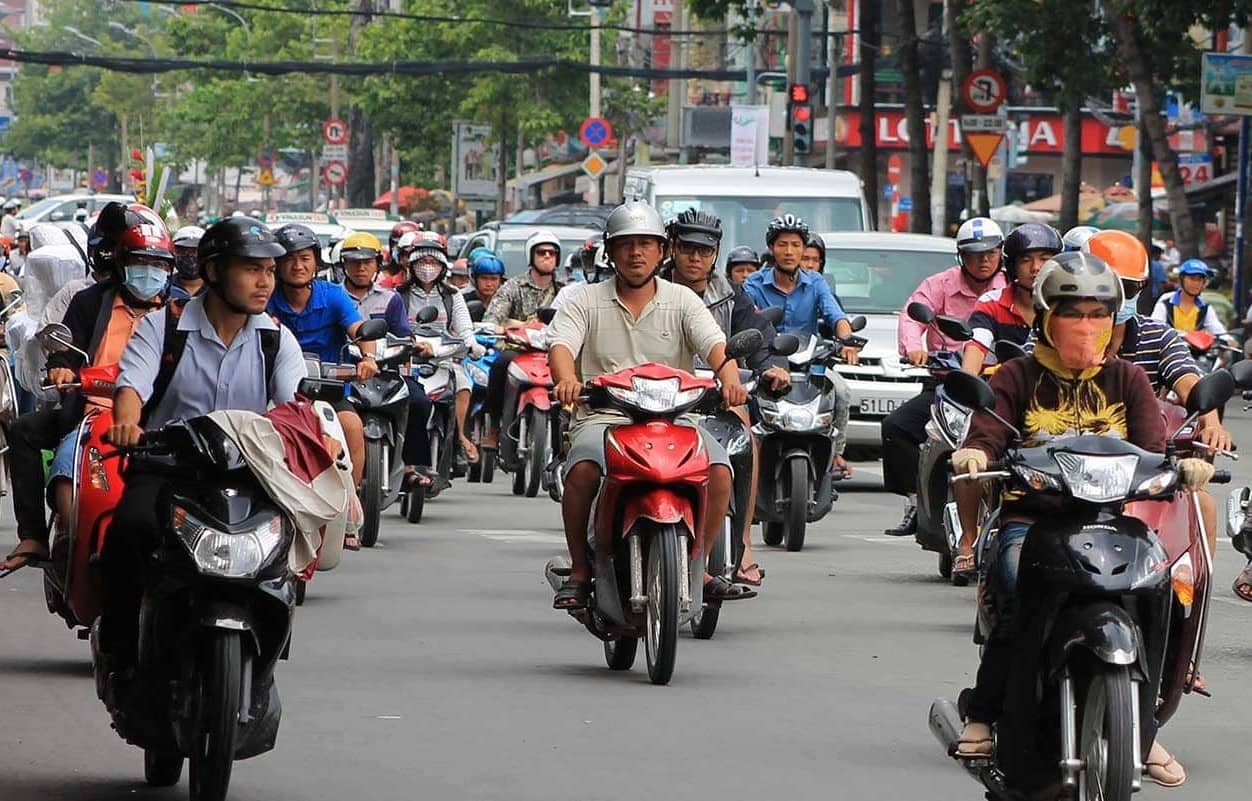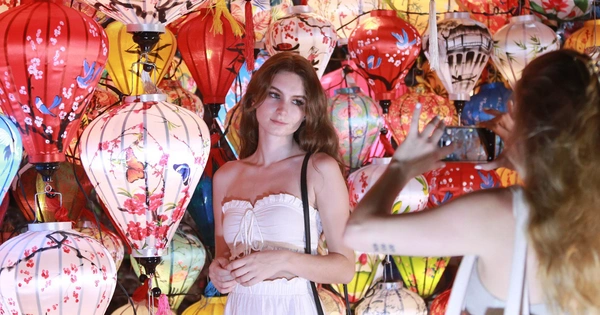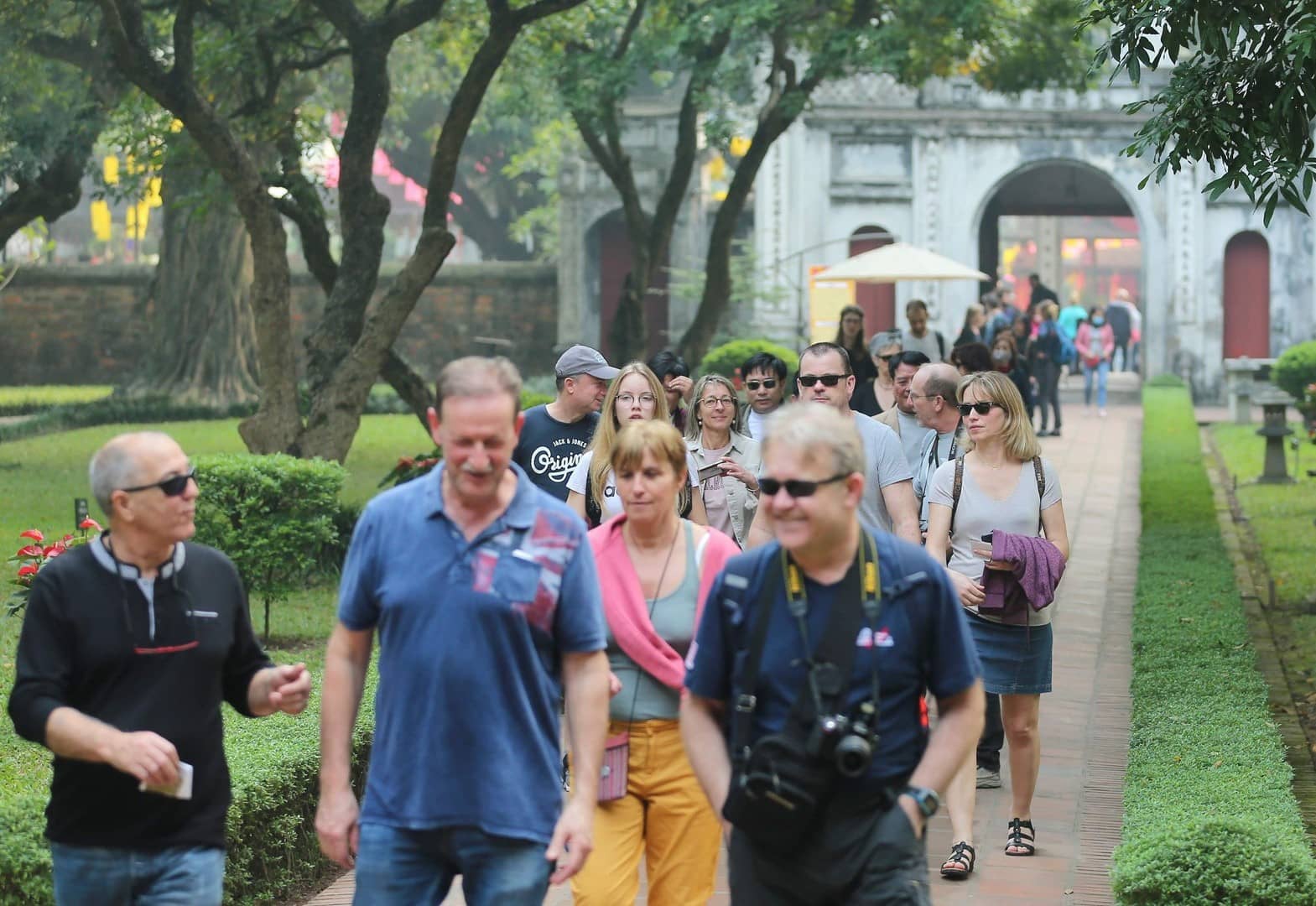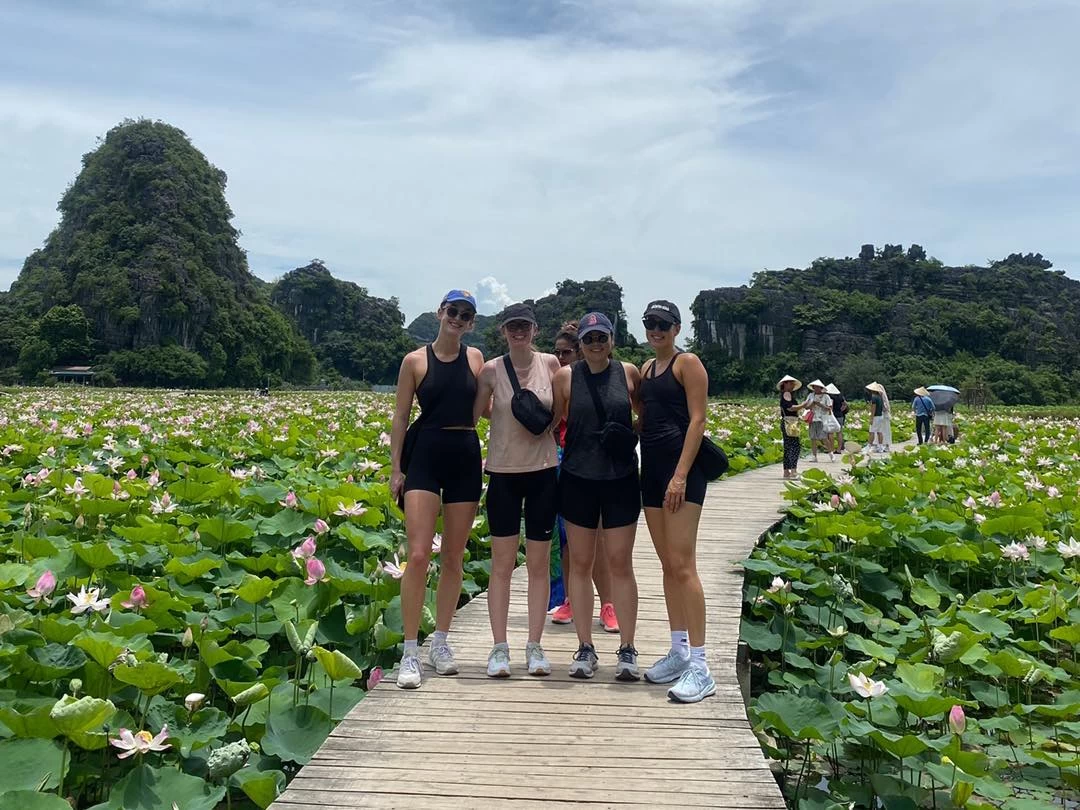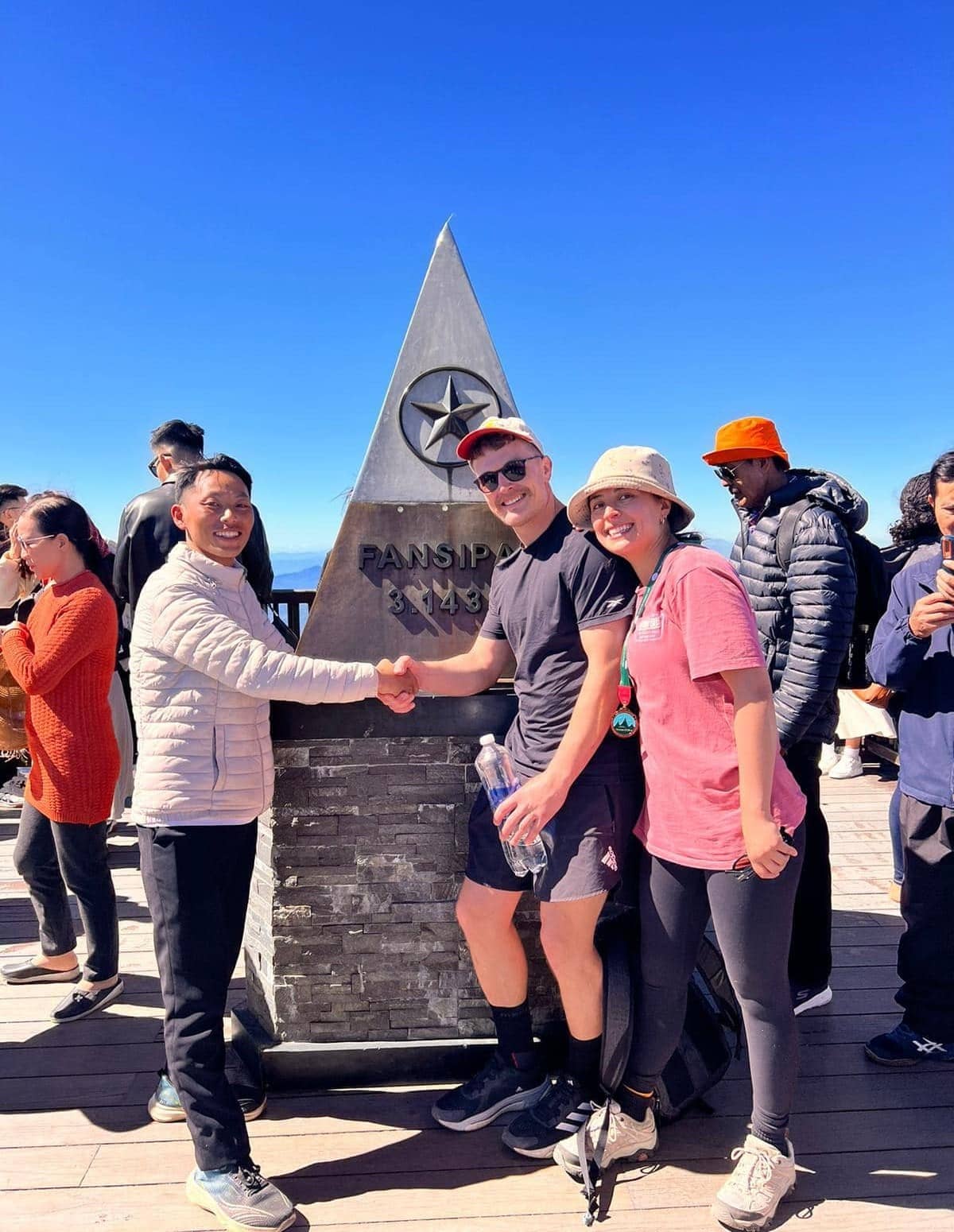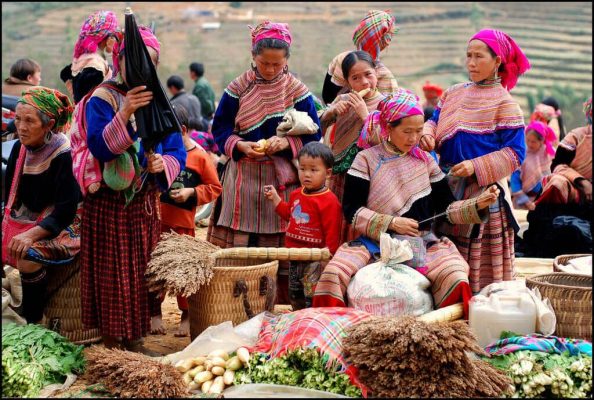
Bac Ha market
Bac Ha Market is nestled beside the towering mountain ranges, shining like a precious gem amidst the majestic Northwest region. This market not only serves as a hub for exchanging goods but also offers a vivid and authentic glimpse into local life. Let’s embark on a journey with Ula Travel to explore the fascinating activities in Vietnam’s premier market – Bac Ha Market!
I. Introduction to Bac Ha Market
1. Where is Bac Ha Market?
Bac Ha Market, or Bac Ha Sunday Market, is located in the heart of Bac Ha Town, Lao Cai Province, Vietnam. It lies approximately 70 kilometers northeast of Sapa and about 80 kilometers from Lao Cai City. Nestled amidst towering mountains and lush green valleys, the market is a must-visit destination for both domestic and international travelers. The journey to Bac Ha Market is scenic, with winding roads offering breathtaking views, making the trip itself an unforgettable experience.
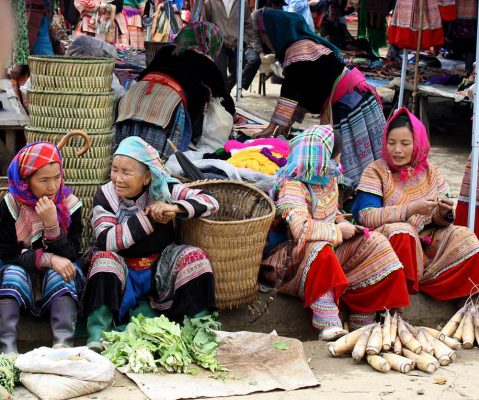
Ethnic women sell vegetables at Bac Ha market
2. The Role of Bac Ha Market in Highland Life
Bac Ha Market is not just the largest market of ethnic minorities in the Northwest region but also a vibrant symbol of cultural and economic life in the area. Every Sunday morning, the market comes alive as a colorful tapestry with the presence of ethnic groups such as the Flower H’mong, Tay, Nung, Dao, and others. From the brightly hued traditional clothing to local produce and unique trading practices, Bac Ha Market creates a fascinating cultural mosaic.
This market is more than just a place of commerce; it is a gathering spot where local communities come together to trade goods, share stories, and preserve their cultural heritage for future generations. It’s a weekly event where traditions meet modernity in a lively and authentic setting.
Start your journey with: Hanoi to Bac Ha Market Tour
3. Why Should International Tourists Visit?
Bac Ha Market is an ideal stop for those who wish to immerse themselves in the vibrant yet tranquil rhythm of life in the Northwest highlands. Here’s why international tourists should not miss this market:
- Unique Cultural Experiences: Bac Ha Market offers a rare opportunity to observe the daily lives of ethnic minorities. Visitors can explore traditional attire, languages, and trading customs and sample the unique highland cuisine. Engaging in conversations with locals will reveal captivating stories about their lives and customs.
- Spectacular Scenery: The market is surrounded by stunning natural landscapes, providing a perfect blend of lively market scenes and the serene beauty of the mountains. The vibrant stalls stand out against the verdant backdrop, making every corner of the market look like a living painting.
- Interaction with Locals: Beyond shopping, Bac Ha Market is a place to connect with the warm and hospitable local people. Their genuine smiles and welcoming nature create a memorable experience of human connection in the highlands.
II. History of Bac Ha Market
Bac Ha Market was established hundreds of years ago during a time when ethnic minority communities primarily relied on agriculture and self-sufficient trade. Initially, it was just a small gathering place where locals met on weekends to exchange agricultural products, livestock, and essential goods.
With its strategic location—situated in the heart of Bac Ha District and at the crossroads of important mountain routes—the market gradually became a major trading hub, attracting not only local residents but also traders from neighboring regions.
With the growth of the economy and tourism, Bac Ha Market has not only maintained its role as the trading hub of the region but has also become a popular tourist destination. Local authorities have invested in infrastructure and reorganized the market to make it more orderly while preserving its unique character.
The market is now divided into several sections, including areas for agricultural produce, handicrafts, livestock, and food. Despite these changes, Bac Ha Market has retained its bustling atmosphere and traditional cultural charm.
III. When is Bac Ha Market Open?
Bac Ha Market is held once a week on Sundays. The market typically begins very early, around 5 a.m., just as the sun rises. This is when ethnic minorities such as the H’Mong, Dao, Tay, and Phu La bring their goods, agricultural produce, and handmade crafts to trade and sell. The market lasts until the afternoon, but the busiest and liveliest time is from morning until around noon.
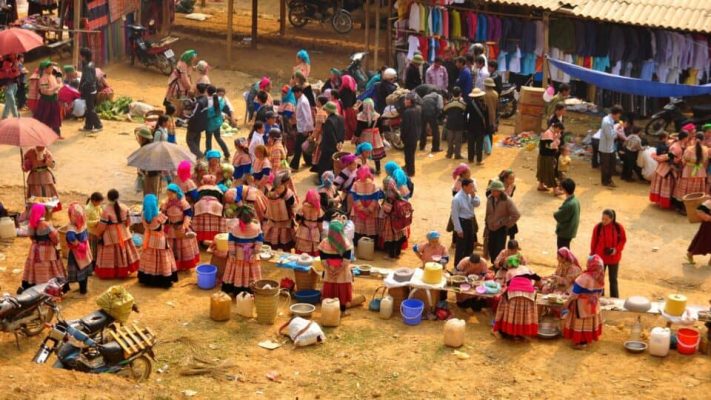
The Bac Ha market only takes place every Sunday morning
1. Opening Hours
- Market day: Every Sunday.
- Operating hours: From early morning (around 5 a.m.) until late afternoon (around 3–4 p.m.).
- Best visiting time: It’s recommended to visit the market between 6 a.m. and 10 a.m. to fully enjoy the bustling atmosphere and explore all the sections of the market, as this is when most of the trading activities take place.
2. Best Time to Visit Bac Ha Market
To fully experience Bac Ha Market and enjoy the stunning natural scenery, consider visiting during the following times:
- Spring (February–April): This is the season when plum and peach blossoms are in full bloom, covering the Bac Ha highlands with breathtaking beauty. The weather is cool and pleasant, making it perfect for sightseeing and photography.
- Autumn (September–November): During this season, the weather is mild, neither too hot nor too cold, and the surrounding terraced rice fields are golden with ripe crops. This is also an excellent time to immerse yourself in the rich cultural traditions of the local ethnic groups.
IV. How to Get to Bac Ha Market
1. From Sapa to Bac Ha Market
Distance: 100 km (~2.5–3 hours by road).
Transportation options:
- Bus: Local buses operate from Sapa town center to Bac Ha. This is an affordable and convenient option if you’re not driving yourself.
- Motorbike: For travelers who love freedom and want to enjoy the stunning scenery along the way, renting a motorbike is an excellent choice. The road from Sapa to Bac Ha features winding curves and slopes, but the reward is breathtaking views of majestic mountains, terraced rice fields, and vibrant ethnic villages.
- Tour services: Many travel agencies in Sapa offer day tours to Bac Ha, which include transportation and a guide. This is a hassle-free option if you prefer a more organized journey with detailed support.
2. From Hanoi to Bac Ha Market
Option 1: Night train to Lao Cai
- From Hanoi, take a night train to Lao Cai station (about 8–9 hours). This is a popular choice for many travelers as it saves time and allows you to rest on the train.
- Once in Lao Cai, continue to Bac Ha by bus, taxi, or motorbike. The distance from Lao Cai to Bac Ha is about 65 km (~1.5 hours by road).
Option 2: Sleeper bus from Hanoi to Bac Ha
- Several bus companies operate routes from Hanoi to Bac Ha with flexible schedules. The journey takes around 6–8 hours. Some buses go directly to Bac Ha, making it very convenient for visitors.
VI. Highlights of the Bac Ha Market
1. Agricultural Products Area
When you step into the agricultural products section of Bac Ha Market, you’ll immediately feel the diversity and richness of the goods that locals cultivate in their terraced fields and surrounding valleys. The area is filled with vibrant colors from various grains, vegetables, and medicinal plants native to the region.
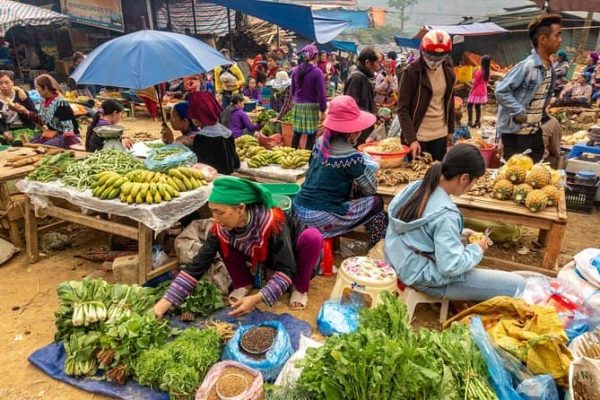
Agricultural Products Area in Bac Ha Market
Stalls are simply arranged, offering items like sticky corn, Bac Ha glutinous rice, taro, pumpkins, vegetables, and mung beans, all freshly harvested from nearby fields. One of the most notable products here is Bac Ha glutinous rice, known for its soft, chewy texture and aromatic flavor, a must-have in every local family.
Additionally, this section features medicinal herbs and seedlings, which locals use either for cultivation or as part of traditional healing remedies. Therefore, this area is not just a shopping destination but also an opportunity for visitors to learn about the sustainable farming methods and agricultural lifestyle of the local people.
You will be like: Hanoi to Sapa Private Tour
2. Livestock Area
Bac Ha Market is especially famous for its livestock section, where various animals typical of the highland region are sold, particularly the distinctive “lợn cắp nách” (piglet carrying under the arm), as well as cattle, buffalo, goats, and even dogs.
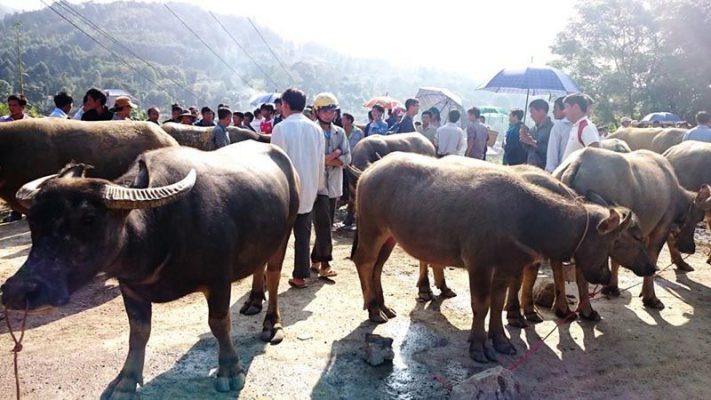
Livestock Area in Bac Ha Market
The atmosphere in this area is lively, with bargaining and discussions about the prices of livestock. Locals come here not just to buy and sell but also to meet others and exchange knowledge about animal husbandry.
Animals are brought to the market by motorbike or walking, giving visitors a lively glimpse of the region’s rural life. Beyond the transactions, this area is a great chance to understand the unique way of raising livestock and protecting local animal breeds.
3. Handicrafts and Jewelry Area
One of the most distinctive features of Bac Ha Market is the area dedicated to jewelry and handicrafts. Here, locals display hand-made items that showcase their craftsmanship and creativity. Traditional jewelry, such as necklaces, bracelets, rings, and earrings, is crafted from pure silver, each piece intricately designed with patterns that reflect the culture and beliefs of the local ethnic groups.
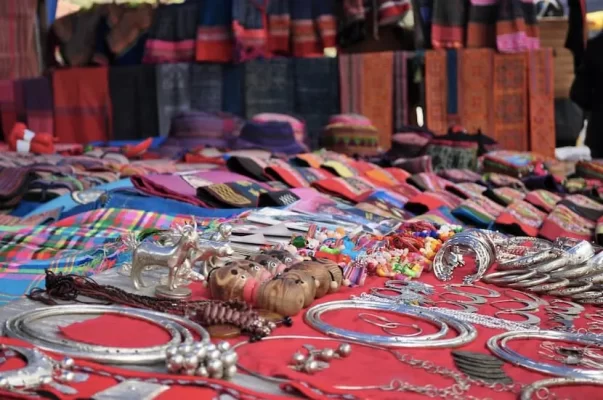
Indigenous Handicrafts and Jewelry Section In Bac Ha Market
Every item is meticulously made, not only for its beauty but also for its deep spiritual significance tied to the traditions of the people. In addition to jewelry, various handicrafts like bags, scarves, embroidered clothes, and baskets made from traditional fabrics are also sold in abundance.
These items come in bright colors and unique patterns, representing the diverse artistic techniques of the region’s people. Visitors will also find traditional musical instruments like flutes, horns, and mouth harps, which are handmade and make wonderful souvenirs.
Read more: Shopping in Sapa – Experience Vibrant Market Delights
4. Local Specialty Food Area
The food section of Bac Ha Market is one of the most attractive areas for visitors. It is where guests can taste the traditional dishes of the H’Mong, Dao, Tay, and Nung ethnic groups.
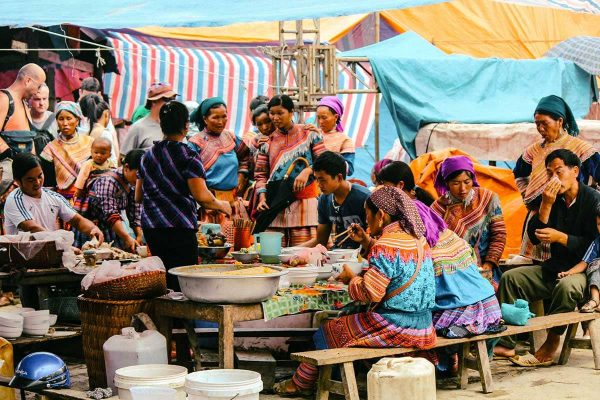
Local Specialty Food Area In Bac Ha Market
“Thang co,” a traditional dish made from horse meat and offal, along with various spices from the mountains, is one of the most iconic dishes here. This dish is not only a common food item in the market but also an essential part of the local people’s meals. Its rich, savory taste, cooked in large pots with a fragrant mix of spices, can captivate anyone who tries it.
Besides “thang co,” other specialties such as five-colored sticky rice, sour pho, and “bún chả” are also available, offering a wide range of flavors. Another must-try is Bac Ha corn wine, brewed from traditional herbal yeast, which is sweet, smooth, and easy to drink. Many vendors offer samples before guests purchase, allowing visitors to taste the authentic local flavor.
The food stalls are simple, with bamboo tables and wooden chairs, creating a cozy, welcoming atmosphere. This area provides an excellent opportunity to not only enjoy delicious food but also engage in conversations with locals and learn about the region’s culinary traditions.
VII. Enjoyable Experience at Bac Ha Market
1. Taste the Unique Highland Cuisine
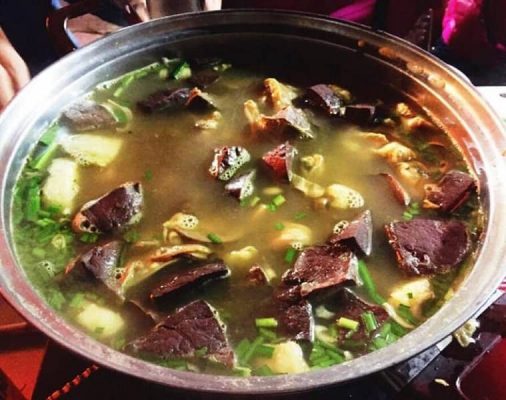
Enjoying The Bac Ha Market Foods
Bac Ha Market is not only famous for its handicrafts but also a great place to explore the distinctive cuisine of the highlands. You will have the chance to taste local dishes such as thang co (a traditional stew), five-color sticky rice, and men men (cornmeal). Don’t miss the opportunity to try black chicken, a specialty of Bac Ha, known for its rich flavor and uniqueness. These dishes not only satisfy food enthusiasts but also offer a deeper understanding of the culinary culture of the local ethnic groups.
Do not miss: Sapa Cuisine – Top 11 Unique Flavors Dishes
2. Buy Handicrafts and Ethnic Clothing
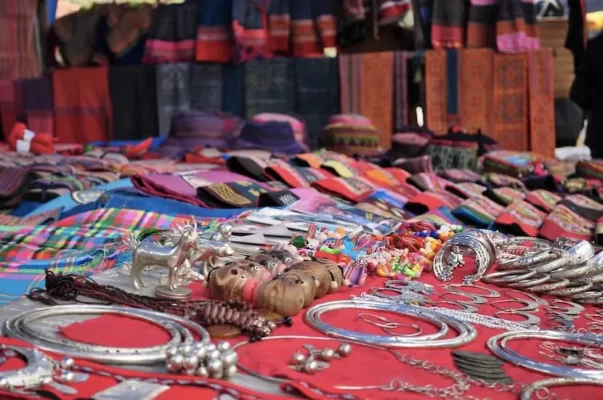
Indigenous Handicrafts and Jewelry Section In Bac Ha Market
Bac Ha Market is a paradise for those who love intricate handcrafted items. You can find beautifully woven fabrics, silver jewelry, ethnic clothing such as H’mong traditional dresses, and delicately embroidered bags. These souvenirs reflect the unique culture of the local people, making them perfect gifts for friends and family or memorable keepsakes for yourself.
Click here: Northern Vietnam Itinerary
3. Visit the Buffalo Market
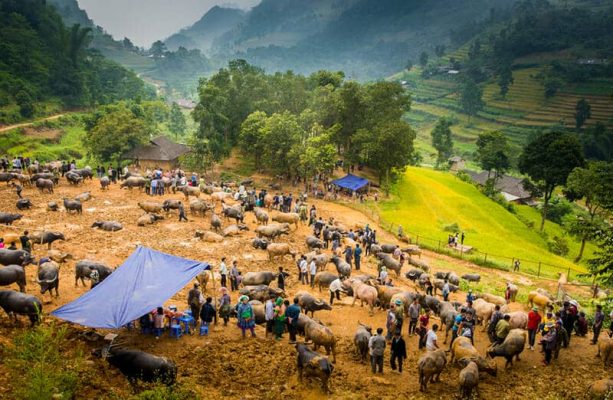
Buffalo market
Bac Ha is also known for its Buffalo Market, where many types of buffalo and livestock from local ethnic groups are gathered. You can witness interesting transactions as people trade livestock, a vital part of the life of the highland people. This is an opportunity to observe the local trade practices and understand more about the farming and animal husbandry culture of the ethnic minorities in the region.
4. Interact with the Local People
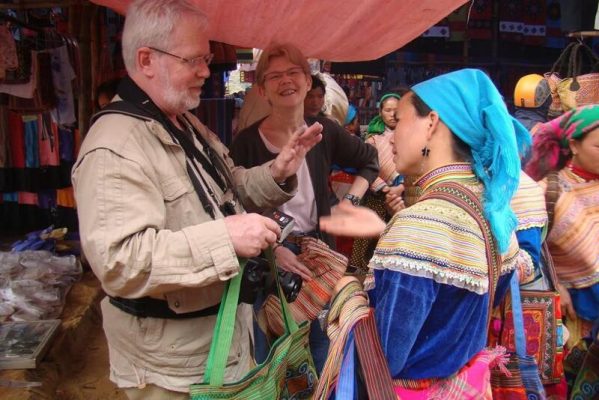
Tourists interact with indigenous people at Bac Ha market
One of the highlights of Bac Ha Market is the opportunity to interact with the friendly local people. They are always welcoming and eager to share stories about their culture, customs, and daily lives. Talking with the locals offers you a deeper insight into their lifestyles and allows you to experience the warmth and hospitality of the people in the highlands.
Are you looking for: Sapa Tour from Hanoi 7 Days
6. Immerse Yourself in the Festive Atmosphere
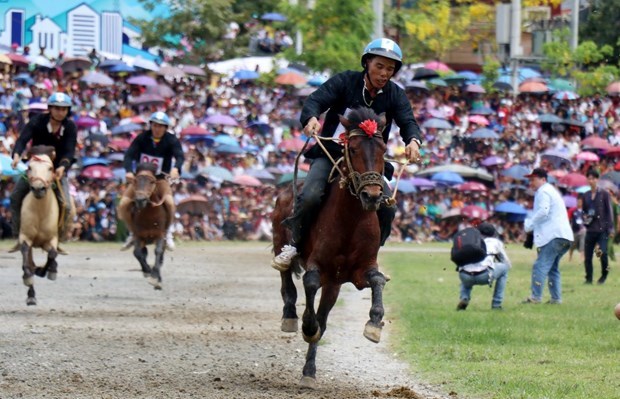
Traditional horse racing festival in Bac Ha
Bac Ha Market is not only a place for buying and selling but also a lively festival, especially on weekends or during traditional holidays of the local ethnic groups. The atmosphere is vibrant with laughter, the sounds of gongs, and the melodies of traditional instruments.
Ethnic groups in their colorful traditional costumes gather in the market, creating a dynamic cultural scene. If you are lucky enough to visit during a festival, you can join in folk games, group dances, and other communal activities, providing you with unforgettable experiences.
Read more: Best things to do in Sapa
VIII. Tips for Visiting Bac Ha Market
1. Arrive Early to Experience the Lively Atmosphere
Bac Ha Market is one of the largest and most famous markets in the northern region of Vietnam, attracting not only locals but also many international tourists.
To fully enjoy the bustling atmosphere and get the best products, it’s recommended to arrive early, around 6 to 7 a.m. During this time, the market starts to open, the atmosphere becomes lively, and you’ll have the opportunity to select the most unique items before the crowds arrive. This is also when you can feel the cultural blend of ethnic groups such as H’mong, Tay, Giay, and Phu La.
2. Bargain Skillfully
Bargaining is not only a necessary skill when shopping at Bac Ha Market but also an important part of the cultural experience. The vendors at the market are usually open to negotiating prices if you know how to engage in polite and friendly conversation.
However, remember that bargaining here is not a confrontation but a friendly exchange. A smile and a simple greeting in Vietnamese or the local ethnic language will help you establish rapport with the sellers, making it easier to agree on a fair price.
3. Wear Comfortable Clothing
Bac Ha Market is located in a highland area, so moving around on steep, uneven roads is unavoidable. To ensure a smooth visit, make sure to wear comfortable clothing and shoes that are easy to move in.
Opt for sneakers or flat shoes with soft soles to protect your feet while walking on rugged terrain. Additionally, don’t forget to bring a light jacket or hat to protect yourself from the sun or cold winds, especially if you visit during the winter months.
In conclusion, Bac Ha Market is not just a shopping destination but also an excellent opportunity to explore the culture and customs of ethnic minorities in the highlands. Visiting Bac Ha Market will surely provide you with interesting and unforgettable experiences, enriching your journey to discover the beauty of Northern Vietnam. Plan your visit to Bac Ha market today with Ula Travel to have the best memorial experiences.
See more: Sapa Travel Tips



